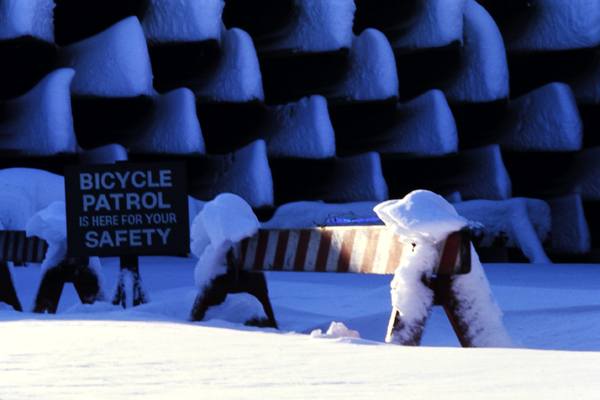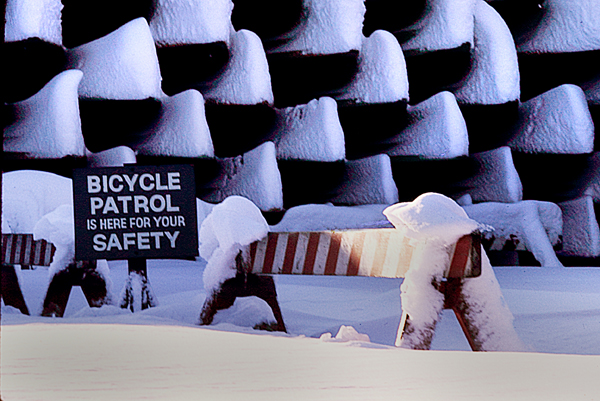
Figure 1 – Bicycle Patrol, 1968 digitized image from a Ektachrome transparency, uncorrected for blue snow effect. (c) DE Wolf 2013.
The photograph in Figure 1 was taken at the boat house in Central Park, NYC after a major snow storm in 1968. The color is as the Ektachrome transparency recorded it. Blue snow? Snow isn’t blue; it’s white. Or is it?
Why is the snow blue? It’s actually not a problem with the film but rather with the snow itself. We’re illuminating with daylight, that is beautiful white light. The color of things comes from three phenomena: light absorption, light scattering, and interference. Let’s leave interference, the root cause of color in oil slicks and butterfly wings, for another day and concentrate on absorption and light scattering. Remember that white light is a mixture of colors or wavelengths that our eye/brain interpret as white. If you have a surface say a piece of white paper that scatters all wavelengths of light it appears white. However, if you have a leaf that reflects or scatters green light but absorbs other colors it will appear green. So the dominant factor in the color of leaves, and flowers, and other pretty things is what wavelengths it absorbs or removes from white. Sounds like subtractive color to me!
Now why is the sky blue? The atmosphere is made of air. The molecules of the air, the oxygen, nitrogen, etc. scatter the light. Physicists call this particular flavor of scattering Rayleigh scattering. Rayleigh scattering goes inversely as the fourth power of the wavelength. So if you have blue light say 450 nm it will scatter (700/450)^4 or 5.9 times more by air than red light at 700 nm. Basically the red light shines down on us while the blue light scatters all over the place, making the sky blue.
The same is true of snow. White light strikes the snow. The blue light reflects back, while the red light penetrates further, eventually becoming absorbed. So the snow appears blue. Snow flakes and thin snow don’t absorb much; so they appear white. Thicker snow and glacial crevices appear blue, as does the snow on my rowboat.
Your eye/brain tends to correct for this and still see white. In digital photography you can use image processing software, like Adobe Photoshop, to “correct” for the blue snow and make it appear as you expect it to be, namely white. I’ve done this in Figure 2, using adjust color balance in Photoshop. Again, you can decide which coloration you prefer.

